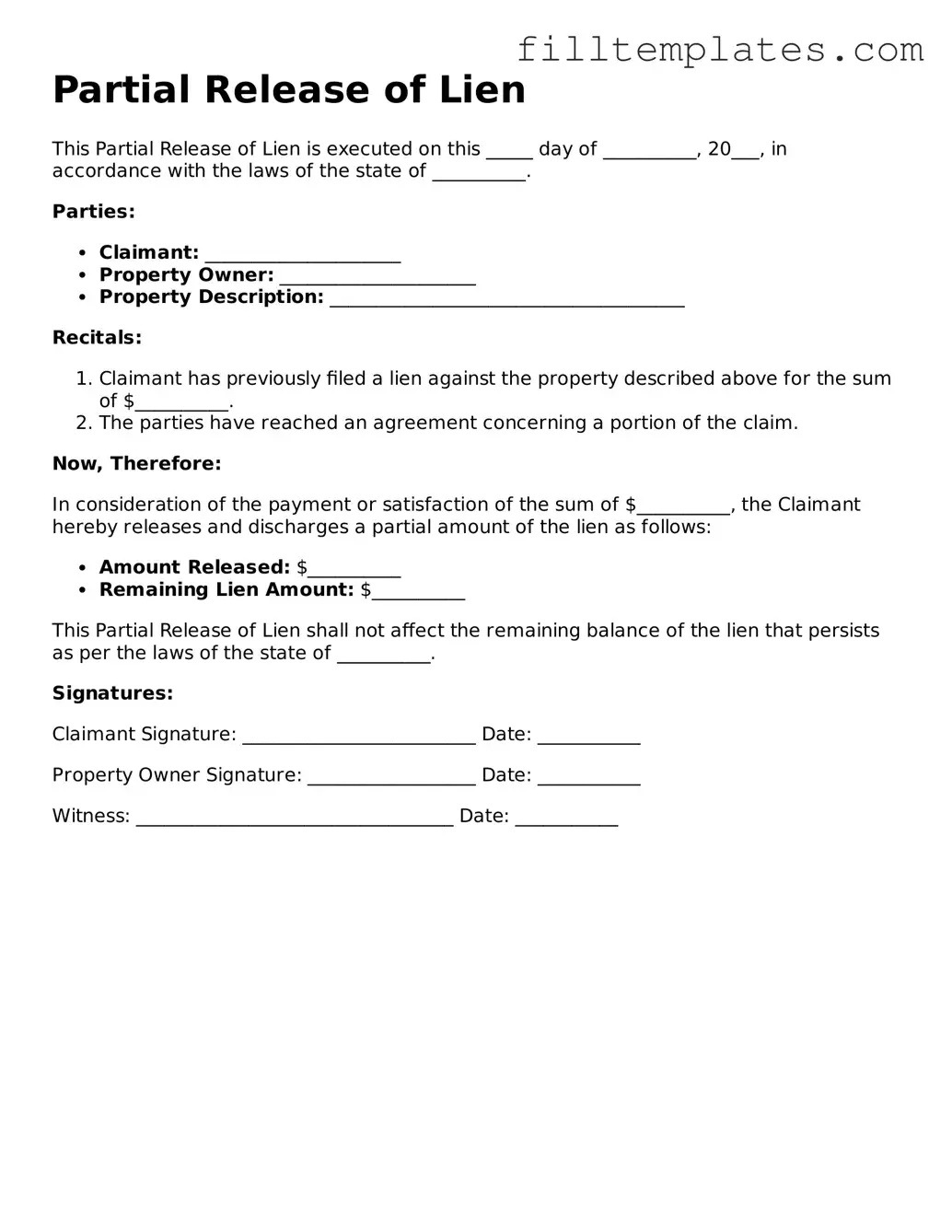Free Partial Release of Lien Template
The Partial Release of Lien form is a legal document that allows a property owner to release a portion of a lien against their property, typically after a payment has been made for a specific segment of work or materials. This form helps clarify the remaining obligations and ensures that contractors or suppliers are compensated for their contributions. Understanding how to properly utilize this form can be crucial for maintaining clear titles and protecting the rights of all parties involved in a construction project.
Open Partial Release of Lien Editor
